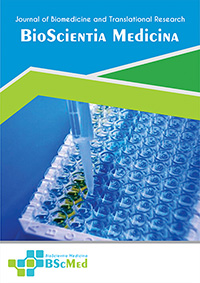Main Article Content
Abstract
Background: Urticaria pigmentosa (UP) is the most common form of cutaneous mastocytosis in children, accounting for 70-90% of cases. UP typically presents in infancy or early childhood with characteristic skin lesions that vary in appearance. The hallmark of UP is the presence of reddish-brown macules or papules that urticate or blister upon rubbing, a phenomenon known as Darier's sign. Histopathological examination of a skin biopsy is confirmatory, demonstrating an increased number of mast cells in the dermis.
Case presentation: We report a case of early-onset UP in a 7-month-old infant boy who presented with multiple hyperpigmented macules all over his body. The lesions were pruritic and had progressively increased in size and number over the past two weeks. Dermatological examination revealed multiple erythematous macules on the face, hyperpigmented macules on the chest, abdomen, and extremities, hyperpigmented plaques on the legs, and a nodule on the back. The lesions exhibited a positive Darier's sign, characterized by swelling and redness upon rubbing. Systemic examination was unremarkable, with no evidence of hepatomegaly, splenomegaly, or lymphadenopathy. Dermoscopy of the lesions revealed a central pigment network and a light brownish peripheral structure, suggestive of UP. Histopathological examination of a skin biopsy confirmed the diagnosis of UP, demonstrating an increased number of mast cells in the dermis. The patient was treated with oral antihistamines (cetirizine) and topical corticosteroids (hydrocortisone) for four weeks, resulting in significant regression of the lesions.
Conclusion: This case highlights the importance of recognizing the clinical features of UP in infants. Early diagnosis and appropriate management can help alleviate symptoms and improve the quality of life for affected children.
Keywords
Article Details
As our aim is to disseminate original research article, hence the publishing right is a necessary one. The publishing right is needed in order to reach the agreement between the author and publisher. As the journal is fully open access, the authors will sign an exclusive license agreement.
The authors have the right to:
- Share their article in the same ways permitted to third parties under the relevant user license.
- Retain copyright, patent, trademark and other intellectual property rights including research data.
- Proper attribution and credit for the published work.
For the open access article, the publisher is granted to the following right.
- The non-exclusive right to publish the article and grant right to others.
- For the published article, the publisher applied for the Creative Commons Attribution-NonCommercial-ShareAlike 4.0 International License.





